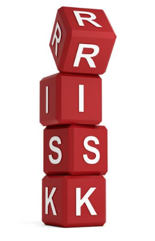[ad_1]
This is a common question that new traders ask, but there isn’t one simple answer. In this post, I’ll break down how to figure out exactly how long you should test a trading system.
As a general rule, you should backtest a trading system for as long as it takes for you to have confidence to trade the system with real money.
In other words, it depends on a few different factors.
Let’s dive into what you should know about backtesting and how long you should do it.
It all begins with defining our terms…
The Definition of “Long”
The first thing that I have to clarify is the what is meant by “long” because there can be some confusion here.
There are different interpretations of this word, so here are the definitions that I’m going to cover in this post.
- Length of time spent backtesting
- Amount of historical data used
- Number of backtested trades
When we look at the 3 definitions, we realize that “long” can mean entirely different things.
So I’ll address each one to clear up any confusion, and show you which ones really matter.
Length of Time Spent Backtesting
Like with many things in life, the amount of time that you spend on backtesting isn’t an indicator of the quality of work that was done during that time.
Therefore, the idea that you have to spend a minimum amount of time backtesting is not useful.
In an extreme example, you could backtest for 4 months, but only have 2 backtested trades.
That wouldn’t tell you anything about how profitable the trading strategy is.
So when you’re looking for a minimum amount of backtesting to prove a trading strategy, you need to throw out the idea that the act of backtesting should be done for a certain period of time.
Amount of Historical Data Used

Another way to measure the amount of backtesting a trader does is to track the amount of historical data used in the test.
In other words, you could backtest a system over 3 years or 30 years of historical data.
Obviously, more data is better.
When you have a lot of historical data, you’ll know how your trading strategy would have performed over many different market cycles.
This is very important in finding out if you have robust trading strategy or if your trading strategy only works in certain market conditions.
For example, if your trading strategy wasn’t tested during the 2007 financial crisis, you wouldn’t know what would happen in an extremely volatile market.
So while the amount of historical data you use to do your backtest is an important factor in determining a valid test, there’s one more things that you have to consider…
How Many Times Should You Backtest a Trading Strategy?
That brings me to the final backtesting measurement…
The most useful metric to look at is the total number of backtested trades.
If you tested a trading strategy over 300 trades, that would be a lot more reliable than if you tested the strategy over only 10 trades.
That’s pretty obvious.
But what’s not so obvious is the minimum number of trades that will give you confidence in the system you’re testing.
There can be a gray area where you’re not sure if you have enough trades in your test.
When you’re in doubt, zoom out and consider the bigger picture.
Think about a day trading strategy…
If you only test 100 trades, then you might only have 2-3 months of data. That’s not nearly enough to get a good idea of if the strategy is reliable or not.
Even 500 trades might not be enough.
You don’t necessarily have to test every single day for the past 20 years, but you should have samples from different market conditions.
There should be trades from:
- Volatile markets
- Quiet markets
- Trending markets
- News shock markets
The more trades you have from each of these types of markets, the more confidence you’ll have in your strategy.
Now consider a swing trading strategy…

With a swing trading strategy, you might have a relatively low number of trades in your backtest.
For example, let’s say that you backtested the RSI Divergence trading strategy on the daily chart of the EURUSD.
With this trading strategy, you might only get 25 trades over 20 years.
So does that mean that you throw out the strategy, even if it was profitable?
Of course not.
But you might not have enough confidence in it to trade it live.
In that case, it’s important to forward test the strategy until you get to a point where you’re confident that the strategy works.
Forward testing will take some time.
But it’s the best way to gain confidence, when you have only have small amount of data.
You could also test the strategy on other markets and timeframes.
If you find other instances where the strategy works, that can also give you more validation that the strategy is reliable.
The 100 Trades Myth
There’s a meme on the internet that you need a minimum of 100 backtested trades to prove that a strategy works.
That’s simply not true.
100 trades is nice number of trades to have.
But again, the number of trades you have in a test only tells you part of the story.
Here’s what you need to know about the 100 trades myth…
The biggest issue with setting a blanket minimum number of trades is that it doesn’t take into account the timeframe being tested and the behavior of the specific market.
Some statistics professors might tell you that you need a minimum of 30 trades to prove that a trading strategy works.
Others will say 500 trades.
In all fairness, that’s a good place to start, from a strictly mathematical point of view.
But in reality, there’s a lot of variability between markets, market cycles and trading systems.
What worked in one market or cycle probably won’t work in another.
That’s why you should be conscious of all of the factors, not just the number of trades alone.
Final Thoughts
So that’s what you need to know about how long you should backtest.
There isn’t one simple answer to this question.
On the surface, you could say that you should have as many backtested trades as possible, over as long a historical period as possible.
But you have to take into account the nuances.
You need to consider your trading strategy, your goals and your level of confidence in your testing.
Not to worry though, once you start backtesting, you’ll get a feel for what’s reliable and what’s not.
Just get started.
Learn more about backtesting in these posts.
[ad_2]
Source link


